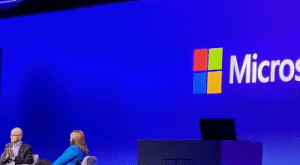In today’s digital era, safeguarding the security of your online accounts and sensitive data is crucial. The conventional username and password combo, once seen as a robust security measure, no longer provides sufficient protection. As cyber threats continue to evolve, becoming ever more sophisticated, it’s high time to embrace Multi-Factor Authentication (MFA) to fortify your digital defences.
What Exactly is Multi-Factor Authentication (MFA)?
Multi-Factor Authentication, often known as MFA or 2FA (Two-Factor Authentication), necessitates users providing two or more forms of identification before gaining access to an account or system. This introduces an additional layer of security beyond the traditional username and password, making it considerably more challenging for unauthorised individuals to gain access.
How Does MFA Function?
MFA typically incorporates three distinct authentication factors:
- Something You Know: This corresponds to the conventional username and password. It’s the knowledge-based factor and serves as the initial line of defence.
- Something You Have: This can be a physical device like a smartphone or a hardware token. Following the input of your username and password, you’ll be required to provide a code generated by the device or received through a mobile app or SMS.
- Something You Are: This refers to biometric authentication, such as fingerprint recognition, retina scanning, or facial recognition. The inclusion of biometrics enhances security significantly.
The Benefits of MFA
- Heightened Security: MFA substantially minimises the risk of unauthorised access, even if an intruder manages to acquire your password. They would still need access to your second-factor authentication method.
- Resilience Against Phishing: MFA serves as a robust defence against phishing attacks. Even if you inadvertently disclose your password to a fraudulent website, the attacker will still require your second-factor authentication.
- Compliance Obligations: Many regulatory frameworks and industry standards, such as GDPR and HIPAA, mandate the implementation of MFA to safeguard sensitive information.
- User-Friendly Experience: Modern MFA solutions are designed to be user-friendly and convenient. Mobile apps and biometric methods have streamlined the process for users.
Deploying MFA Within Your Organisation
To effectively implement MFA within your organisation, consider the following steps:
- Select the Most Appropriate MFA Method: Choose the MFA methods that align with your organisation’s specific requirements. Options include SMS-based codes, mobile apps like Google Authenticator, or hardware tokens.
- Educate Your Users: Provide comprehensive training and guidance to your employees or users on setting up and using MFA. Ensure they appreciate the significance of this additional layer of security.
- Continuous Testing and Monitoring: Regularly assess your MFA system and closely monitor for any suspicious activity. Be prepared to respond swiftly to any security incidents.
- Explore Adaptive Authentication: Certain MFA solutions offer adaptive authentication, which evaluates the risk level of login attempts and adapts the authentication requirements accordingly.
In conclusion, Multi-Factor Authentication stands as a vital tool for safeguarding your digital assets in a progressively perilous online landscape. By incorporating MFA, you can significantly elevate your security posture and diminish the risk of unauthorised access to your accounts and systems. Stay one step ahead of cyber threats and make MFA an integral component of your cybersecurity strategy today.
Want to learn more about MFA? Listen to a recent Tech Takeaway episode titled – The Evolution Of MFA
If your organisation needs help in deploying MFA, please feel free to contact our team by filling out a contact form by clicking the ‘contact us’ button in the top right of the page. Alternatively, you can email us at, sales@gardnersystems.co.uk and a member of the team will be in touch.



